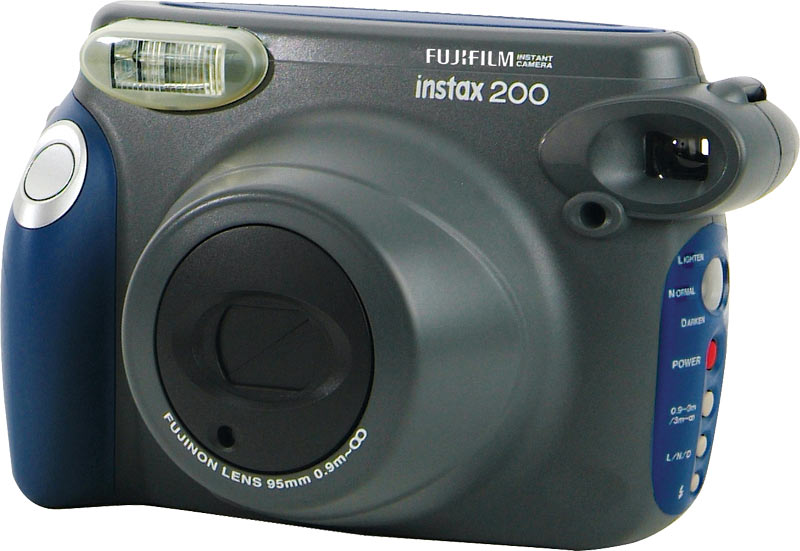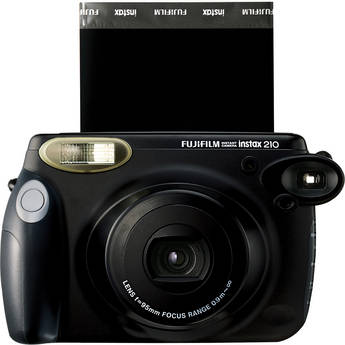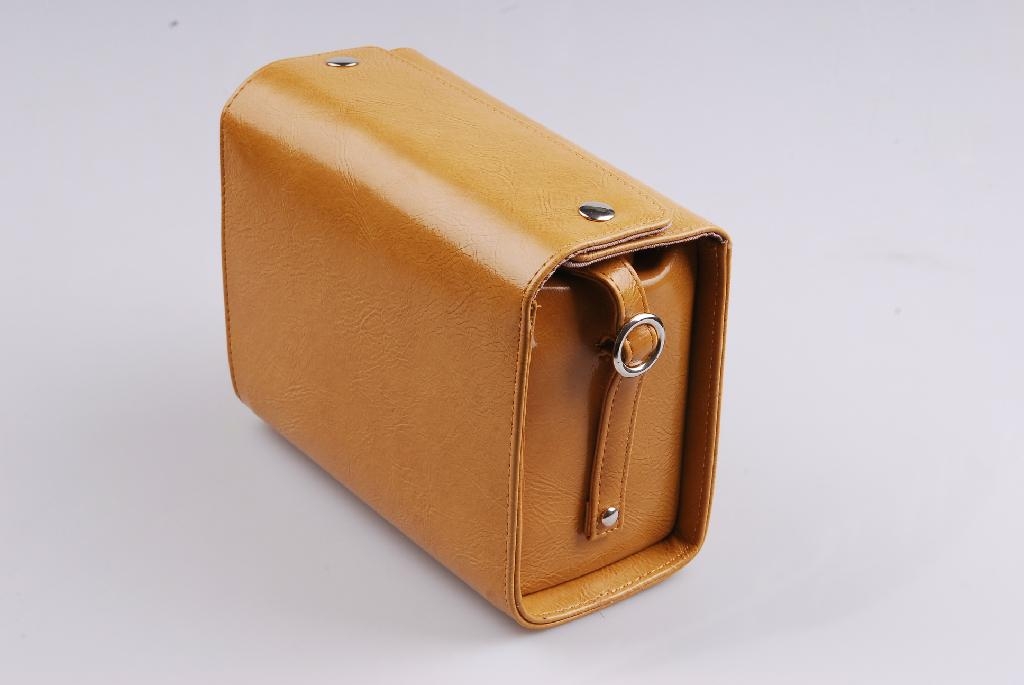Fujifilm Instax
The front of the camera features a unique grip that is quite literally a bulbous area of the camera that reminds me a bit of an enlarged tumor. There is very little space in between the grip and the lens—which tells me that this camera was designed for users with smaller hands. Nearing the top of the grip is the shutter release button which needs to be pressed in as opposed to being pressed down as is the style of many traditional DSLR cameras.Above the shutter release is the viewfinder, which takes time to adjust to. The reason for this is because the viewfinder does not show the user what will be shot through the lens. If you’re confused, think about the design of a DSLR vs a small instant film camera: a DSLR has a mirror and pentaprism. This camera just has a lens, a release and a film loading area. You’ll need to compensate a bit when shooting photos, but not by much.Next to the viewfinder is the flash and lightmeter. The flash always fires no matter what. Below this is the lens. To turn the camera on, the user just needs to full the lens out. To turn it off, push the lens back in.The back of the camera has the film loading bay and the viewfinder eyepiece. Loading film is very simple: just line up the yellow lines and insert then close. You’ll need to fire a shot first in order to have the camera remove the cover through the top printer. Next to the loading pay is the shot counter.The top of the camera has four different settings: indoor, cloudy, sunny, and really sunny. The user adjusts these according to where they are and the lighting around them. Next to these is the printer. The camera prints business card sized images.
















No comments:
Post a Comment